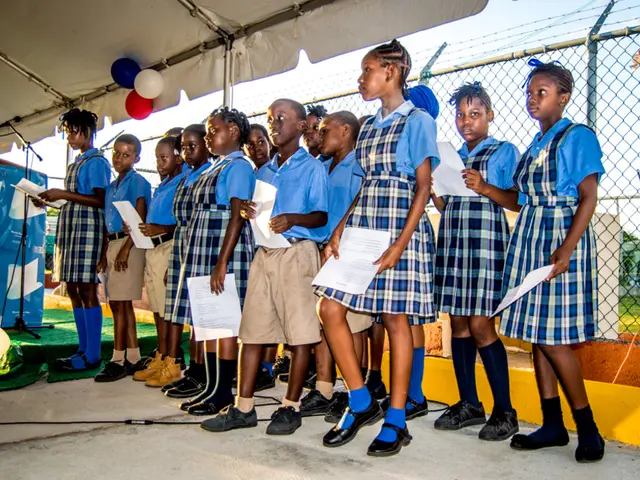Homeschooling in U.S. Surges to Nearly 6% of Students
Homeschooling in the U.S. has seen a significant shift, with nearly 6 percent of school-aged children now being educated at home. This marks a substantial increase from pre-pandemic levels, according to the Household Pulse Survey.
The survey reveals a diverse landscape of different homeschooling families across the economic spectrum. Almost half earn less than $100,000 annually, while a quarter earn more. This is a significant change from 2019, when only 2.8 percent of families fell into the higher income bracket.
The racial makeup of homeschooling families is also diverse. Hispanic or Latino families make up 19 percent, while white families account for 60 percent. Black families represent 12 percent, and families of two or more races or other backgrounds comprise 7 percent.
State-by-state, homeschooling participation varies greatly. Alaska leads with 12.6 percent, followed by Tennessee and West Virginia. Meanwhile, Rhode Island, Massachusetts, and New York have the lowest rates. In Tennessee, homeschooling has surged to about 10 percent of the K-12 population, driven by increased voucher use and parental demand.
Among homeschooling parents, 27 percent hold a bachelor's degree or higher, and 29 percent have a high school diploma or GED.
The Household Pulse Survey provides the most detailed and up-to-date picture of homeschooling in the U.S. With the 2023-24 school year data set to be released in early August, the trend and its impacts on education and families continue to be closely watched.
Read also:
- Inherent Skills Know No Bounds, Yet Access to Employment Remains Unequal: Suggestions for a More Equitable Job Market of the Future
- Adarsh Kumar, 18, Wins Chegg.org Global Student Prize 2025
- EPA's Anaerobic Digestion Data Project Offers Insights on Food Waste Facilities
- EU Proposes Using Frozen Russian Assets to Fund €140bn Ukraine Loan




